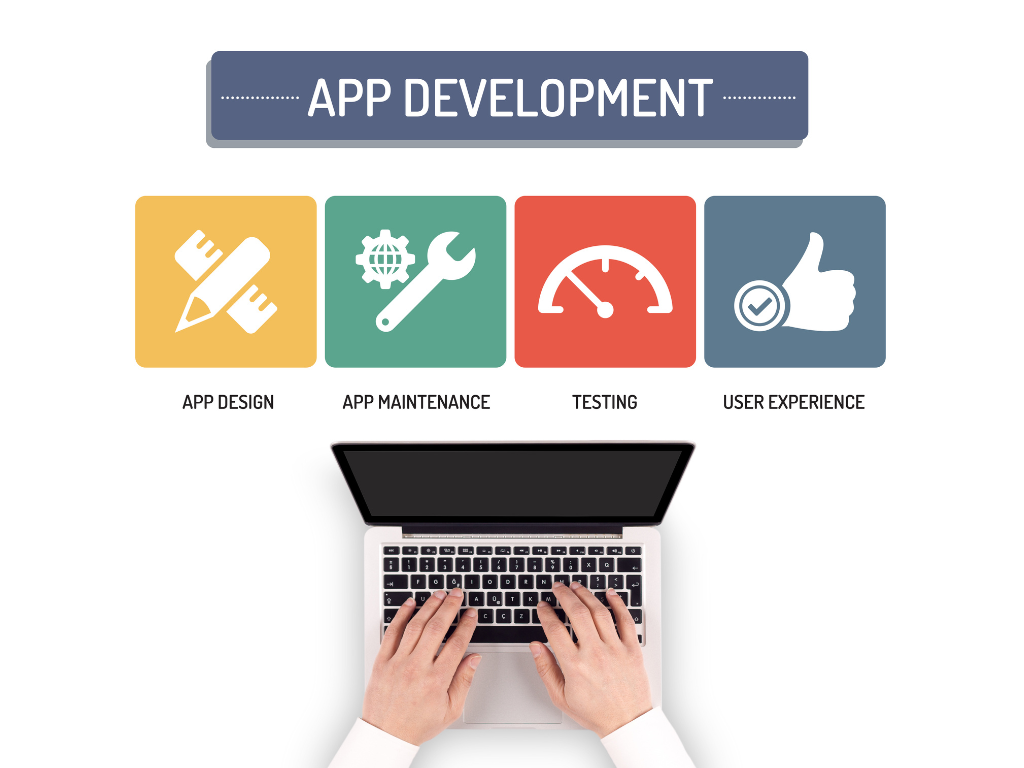In the realm of LangChain development, performance optimization is not just a luxury—it’s a necessity. As applications built on this platform begin to scale and handle more complex data and operations, optimizing performance ensures that the applications remain efficient, responsive, and reliable.
Why is Performance Optimisation Crucial in LangChain Applications?
Performance optimization in langchain development applications is crucial because it directly impacts the user experience and operational costs. Efficiently running applications consume less resources, which can significantly reduce server costs and improve response times, resulting in a smoother, faster user experience that keeps users engaged and satisfied.
How does LangChain Support Effective Performance Management?
LangChain is designed with several built-in features that support effective performance management. These include efficient handling of concurrent processes, advanced caching mechanisms to reduce load times, and tools that help developers identify and eliminate performance bottlenecks. LangChain’s architecture also facilitates easy integration with monitoring tools that provide real-time analytics on performance metrics.
Understanding LLMS in the Context of LangChain

LLMS, or Large Language Model Services, is a crucial component in the LangChain ecosystem, designed to enhance and streamline the development process.
What is LLMS, and How Does It Integrate with LangChain?
LLMS stands for Large Language Model Services, which is a framework designed to integrate seamlessly with LangChain to provide robust language model functionalities. LLMS allows developers to harness powerful language processing capabilities directly within their LangChain applications, enabling more dynamic and intelligent application behaviors.
How does LLMS Enhance the Capabilities of LangChain for Developers?
LLMS enhances LangChain’s capabilities by providing developers with access to advanced language processing tools without the need for extensive setup or external APIs. This integration allows for natural language understanding, generation, and transformation processes to be more deeply embedded within applications, making it easier to develop complex language-based applications. Additionally, LLMS optimizes these processes to run efficiently, ensuring that even as applications scale, they maintain high performance levels.
Key Strategies for Enhancing Performance in LangChain Applications
Optimizing performance in LangChain applications involves a combination of effective coding practices and leveraging the built-in features of LLMS.
What Techniques Can Developers Use to Optimise LangChain Code?
Developers can optimize LangChain code by:
- Efficient Data Handling: Minimize data fetching operations and use asynchronous programming models to handle I/O operations.
- Caching Strategies: Implement caching for frequently accessed data, which can significantly reduce database load and improve response times.
- Optimizing Queries: Ensure that all data queries are optimized for speed and efficiency, especially when dealing with large datasets.
How to Leverage LLMS Features for Performance Improvements?
LLMS features can be leveraged for performance improvements by:
- Model Optimization: Utilize LLMS’s ability to selectively load and execute parts of language models based on the specific needs of the application, thus saving computational resources.
- Batch Processing: Group similar operations together to minimize processing overhead and maximize throughput.
- Advanced Configuration: Use LLMS’s configuration options to fine-tune language model parameters for optimal performance based on the specific use case and application load.
Tools and Resources for Performance Optimisation

To maintain high performance in LangChain development, it’s essential to use tools that can help profile, diagnose, and resolve performance issues quickly.
What Tools are Available for Profiling and Diagnosing Performance in LangChain?
- Python Profilers (cProfile, Py-Spy, etc.): Standard Python profilers like
cProfileandPy-Spycan help analyze code execution and reveal functions that consume the most time or memory. - LangChain Debugging Modules: LangChain provides built-in debugging modules that assist in tracing and logging the flow of execution, allowing developers to pinpoint problematic areas quickly.
- Memory Profilers: Memory profilers, such as
memory-profiler, help identify memory leaks and excessive memory consumption. - Monitoring Tools (Prometheus, Grafana, etc.): Monitoring tools like Prometheus and Grafana can be integrated to provide real-time performance metrics and alerts.
How to Use These Tools to Identify and Address Performance Bottlenecks?
- Profiling Execution: Use Python profilers to measure function execution times and identify parts of the code that can be optimized.
- Memory Analysis: Employ memory profilers to ensure that no memory leaks or inefficient memory allocations are present.
- Debugging Logs: Implement comprehensive logging and debugging strategies to capture the full flow of data through LangChain components.
- Real-Time Monitoring: Continuously monitor resource usage, latency, and throughput to detect performance degradation before it becomes a critical issue.
Writing Efficient Code with LangChain
Writing performance-optimized code is a foundational step in achieving high-performing applications with LangChain.
Best Practices for Writing Performance-Optimised Code in LangChain
- Avoid Redundant Data Fetching: Only fetch data that is necessary for processing to minimize latency.
- Concurrency and Parallelism: Use asynchronous programming for I/O-bound tasks and multithreading for CPU-bound tasks to speed up execution.
- Modular Code Design: Break down tasks into modular functions that can be reused and tested independently.
- Lazy Loading: Load data and models only when needed, rather than preloading everything at startup.
- Efficient Data Structures: Use appropriate data structures (e.g., sets, dictionaries) to minimize search and lookup times.
Examples of Efficient Coding Techniques and Patterns
- Batch Processing: Instead of processing items one by one, group them into batches to minimize processing overhead.
- Efficient Searching: Use search algorithms like binary search on sorted data to speed up lookups.
- Caching: Cache frequently accessed results to avoid repeated computation or data retrieval.
Scaling LangChain Applications Using LLMS

Scaling is critical to ensure that applications remain performant under varying loads. LLMS provides features that facilitate seamless scaling.
Strategies for Scaling Applications Built with LangChain and LLMS
- Horizontal Scaling: Deploy multiple instances of the application across servers to distribute the load evenly.
- Load Balancing: Use load balancers to direct requests to the least busy server instance.
- Optimised Caching: Implement shared caches to store frequently accessed data, reducing redundant data fetches.
Considerations for Maintaining Performance While Scaling
- Data Partitioning: Divide datasets into manageable chunks and distribute them across servers to minimize contention.
- Resource Allocation: Ensure that critical resources like memory and CPU are provisioned proportionately as load increases.
- Regular Monitoring: Monitor key performance metrics continuously to anticipate and address bottlenecks.
Monitoring and Maintaining Performance
Consistent performance monitoring and maintenance are essential to ensuring your LangChain applications operate smoothly throughout their lifecycle.
How to Continuously Monitor the Performance of LangChain Applications
- Real-Time Monitoring with Observability Tools:
- Metrics Aggregation: Set up tools like Prometheus to aggregate metrics such as response times, memory usage, and CPU load in real time.
- Dashboards: Use Grafana or similar tools to visualize the collected metrics and detect trends or anomalies quickly.
- Alerts and Notifications: Configure alerts for critical metrics to receive notifications when performance thresholds are crossed.
- Logging and Distributed Tracing:
- Comprehensive Logging: Implement detailed logging to capture relevant data, including errors, slow execution paths, and key decision points.
- Distributed Tracing: Use tracing tools like Jaeger or OpenTelemetry to visualize and measure requests across microservices and detect performance bottlenecks.
- Profiling and Testing:
- Regular Profiling: Periodically run profilers to identify parts of the code that are causing slowdowns.
- Load Testing: Conduct regular load testing to ensure the application can handle increasing user traffic or data load.
Tips for Maintaining Optimal Performance Throughout the Lifecycle of an Application
- Update Dependencies:
- Regularly update dependencies, especially those related to LangChain and LLMS, to benefit from the latest performance enhancements.
- Optimize Database Access:
- Use optimized database queries and indexing to reduce latency and minimize unnecessary data fetching.
- Resource Management:
- Monitor CPU and memory usage of each application instance and scale up resources accordingly as data or traffic increases.
- Code Refactoring:
- Continuously refactor code for simplicity, efficiency, and clarity. This reduces technical debt and makes future optimizations easier.
- Caching Strategies:
- Implement intelligent caching strategies at various levels (memory, database, etc.) to minimize redundant computations.
Achieving High Performance with LangChain and LLMS

Optimizing performance in LangChain and LLMS applications requires a holistic approach, encompassing efficient coding practices, advanced tools, and consistent monitoring. Here’s a quick recap of key strategies for achieving high performance:
- Tools and Profilers: Employ profiling and diagnostic tools to detect performance bottlenecks early.
- Efficient Coding Techniques: Use modular design, concurrency, caching, and efficient data structures.
- Scaling Strategies: Plan for horizontal scaling, load balancing, and optimized caching.
- Monitoring: Implement real-time monitoring with metrics aggregation, logging, and distributed tracing.
LangChain development is likely to continue evolving, introducing new features for optimization and scalability. Embracing these updates and maintaining a proactive approach to performance management will empower developers to build highly efficient applications.


